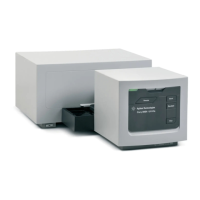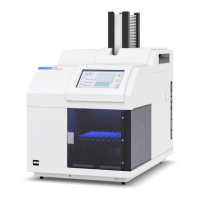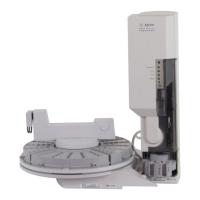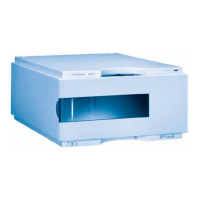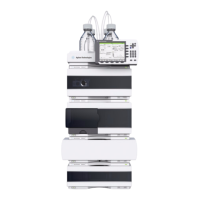106 Understanding Your Agilent ChemStation
4 Integration
Integration Events
Choosing Peak Width
Choose the setting that provides just enough filtering to prevent noise being
interpreted as peaks without distorting the information in the signal.
• To choose a suitable initial peak width for a single peak of interest, use the
peak’s time width as the base as a reference.
• To choose a suitable initial peak width when there are multiple peaks of
interest, set the initial peak width to a value equal to or less than the
narrowest peak width to obtain optimal peak selectivity.
If the selected initial peak width is too low, noise may be interpreted as peaks.
If broad and narrow peaks are mixed, you may decide to use runtime
programmed events to adjust the peak width for certain peaks. Sometimes,
peaks become significantly broader as the analysis progresses, for example in
isothermal GC and isocratic LC analyses. To compensate for this, the
integrator automatically updates the peak width as peaks broaden during an
analysis unless disabled or set with a timed event.
The Peak Width update is weighted in the following way:
0,75 × (existing peak width) + 0,25 × (width of current peak)
If a timed integration event disables or sets the peak width to a specific value,
the automatic peak width adjustment is disabled.
Height Reject and Peak Width
Both peak width and height reject are very important in the integration process.
You can achieve different results by changing these values.
• Increase both the height reject and peak width where relatively dominant
components must be detected and quantified in a high-noise environment.
An increased peak width improves the filtering of noise and an increased
height reject ensures that random noise is ignored.
• Decrease height reject and peak width to detect and quantify trace
components, those whose heights approach that of the noise itself.
Decreasing peak width decreases signal filtering, while decreasing height
reject ensures that small peaks are not rejected because they have
insufficient height.
• When an analysis contains peaks with varying peak widths, set peak width
for the narrower peaks and reduce height reject to ensure that the broad
peaks are not ignored because of their reduced height.

